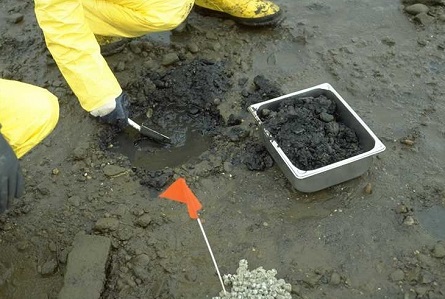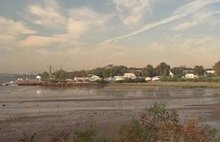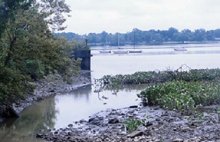Metal Bank
Hazardous Waste Site | Philadelphia, PA | 1962 to Present
What Happened?
From 1962 to 1985, Metal Bank of America Inc. owned and operated a salvage yard adjacent to the Delaware River. The facility recycled scrap metal and electrical transformers from various utility companies. Oil containing PCBs and other contaminants was released into the environment during the salvage process, and also leaked from an underground storage tank.
In 1983, EPA designated the Metal Bank property a Superfund site. NOAA has worked closely with EPA throughout the cleanup to ensure that activities are protective of the environment.
From 2008 to 2010, the EPA-led crew excavated contaminated soils and river sediments, capped river sediments, installed a retaining wall near the river, and removed an oil storage tank. In 2012, the upland area was replanted with native vegetation. In 2013, EPA confirmed that cleanup efforts had reduced the threat to the river environment and enhanced recovery of habitat. EPA continues to monitor contaminant levels and habitat recovery at the site.
What Were the Impacts?
Many species, including clams, birds, fish, and the endangered Atlantic and Shortnose sturgeons, were exposed to harmful concentrations of PCBs. Impacts were also from hardening of the shoreline with sheet pile and rip rap.
What’s Happening Now?
On September 13, 2024, the Trustees released the Final Restoration Plan and Environmental Assessment to restore habitat and natural resources injured as a result of contaminants being released at the site.
On March 17, 2021 a settlement was proposed to resolve liability for injuries to natural resources stemming from hazardous waste pollution at the Metal Bank Superfund site. After a public commenting period the settlement was finalized on November 4, 2021.
The settlement of $950,000 included $535,193 to fund projects that will help restore natural resources injured by pollution; the remainder will partially reimburse past assessment costs.
The Trustees saught public input to identify habitat restoration and recreational use projects within the Delaware River and the general Philadelphia area. Submissions fell into the identified categories that seek to remedy injuries caused by the hazardous waste release.
On February 27, 2024, The Trustee Council released a Draft Restoration Plan and Environmental Assessment reccommending a habitat restoration project to compensate the public for injuries caused by the release of contaminants at the site. Public comments were accepted until April 12, 2024.
“Achieving cleanup and restoration of valuable Delaware River habitat in this urban area is necessary for the recovery of natural resources, endangered species, and the ongoing revitalization of local communities.”Peter Knight,NOAA Regional Resource Coordinator










